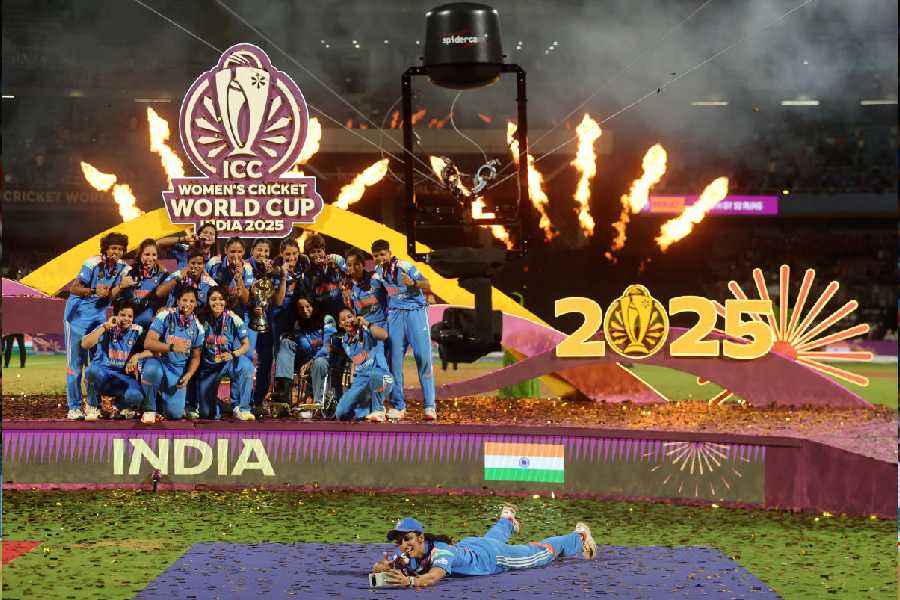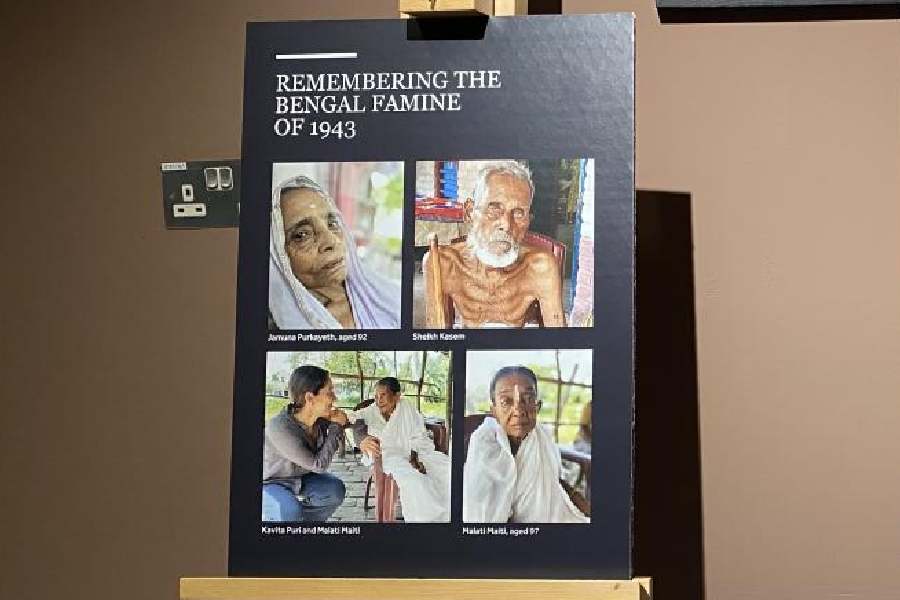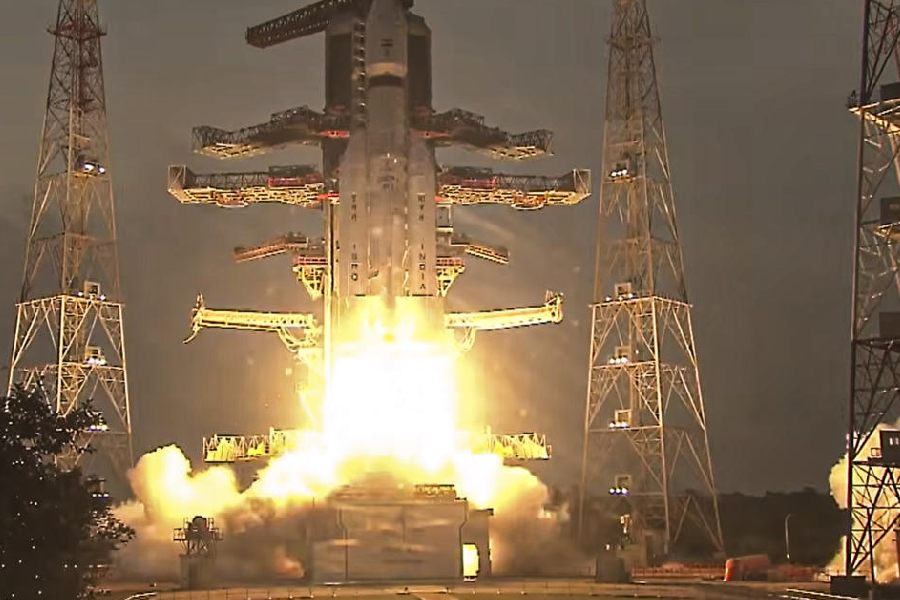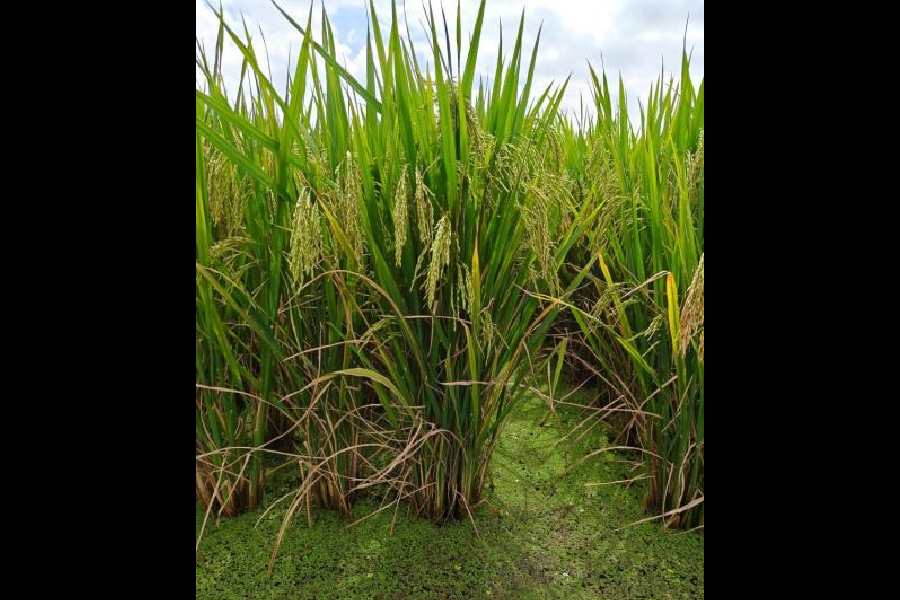 |
| An assault convoy of trucks and armoured vehicles of the 101st Airborne Division’s 3rd Brigade Combat team prepares to cross into Iraq. (Reuters) |
Kuwait, March 22: Safwan is an Iraqi town just beyond the northern border in Kuwait. It has been described as a smallish village which before the war had a population of about 15,000. At borders all over the world, villagers are the first to evacuate at the hint of war.
Route 80 or the “Abdaly Road” that cuts through these parts of Kuwait is also the highway that goes on to Baghdad, about 700 kilometres onwards.
The Iraq-Kuwait border is demarcated on a long stretch by a wall of desert sand and stone called a “berm”. In the 1991 Gulf War, Safwan came of historic value when Iraqi forces here surrendered. About 40 kilometres to the east of Safwan is the Iraqi town of Umm Qasr, where coalition forces are fighting street-by-street with elements of a disintegrating Iraqi army’s 51 division.
Overhead, the sky is hazy, presumably from fires in southern Iraq.
Immediately west of Safwan is Jabal Sanam, at 151 metres, the highest point along the Iraq-Kuwait international boundary. At one time, the highest point in the de-militarised zone (DMZ) that stretched 10 kilometres into Iraqi territory and five kilometers into Kuwait. Abdaly, too, was in the de-militarised zone. “Was” because the zone is now heavily ‘militarised’.
Jabal Sanam’s strategic value was not lost on either side. The Iraqi army unit in Safwan had its surveillance and communication equipment atop the hill, as did the United Nations Iraq Kuwait Observer Mission, whose mandate has now been suspended.
In the hours before “Operation Iraqi Freedom” that the coalition forces had taken to prepare for the invasion of Iraq, the Iraqi units in Safwan and Jabal Sanam had seen the steady build-up, watching wargames played by the troops in desert camouflage fatigues. Safwan also has an airstrip that in military jargon is called “advanced landing ground”. Beyond Safwan, is the vast stretch of Iraqi desert.
On the night of March the 19th, when columns of the coalition forces began moving into Iraq, breaching the berms, it was only to be expected that Safwan will be in the direct line of fire.
The Iraqi unit was asked to surrender. It replied with a volley of artillery from 122 mm Russian-made guns. Weapon Locating Radars of the coalition forces quickly picked out the gun locations. The volley was met with a barrage from the heavier 155mm artillery, Hellfire missiles from choppers and incendiary munition, the like of which has been seen before in previous wars as in Vietnam.
Safwan fell. The coalition military machine rolled into Iraq.
Reporters missing
Unofficial sources associated with the coalition forces command have said “several groups of journalists” have been missing in the north of Kuwait towards the Iraqi border.
The sources would not immediately confirm if the journalists were “embeds” — travelling with units of the coalition forces that are in action — or “unilaterals” — journalists accredited to the coalition media centre but acting independently. One group comprises four journalists from the UAE.
Access to the north of Kuwait is restricted. Neither Kuwaiti authorities nor the coalition command are currently granting permission.
It is possible that movement will ease if the coalition forces are able to consolidate hold on southern Iraq.










